Jiak kinJiu 吃香蕉 Cantonese say 食香蕉 sik hoeng ziu
DID YOU KNOW THIS?
As bananas ripen and develop brown spots, their antioxidant levels increase and become easier to digest. They're packed with nutrients like potassium, vitamin C, and vitamin B6. Eating brown bananas boosts our immune system and enhancing white blood cell production, which helps body in fighting infections and even cancer. Next time you see a banana with brown spots, think twice before throwing it!
25 Types of Bananas From A to Z
Everyone loves a good banana, but did you know there are tons of different types of bananas? In this post we will cover 25 types of bananas, from standard bananas to mini bananas to extra large bananas!
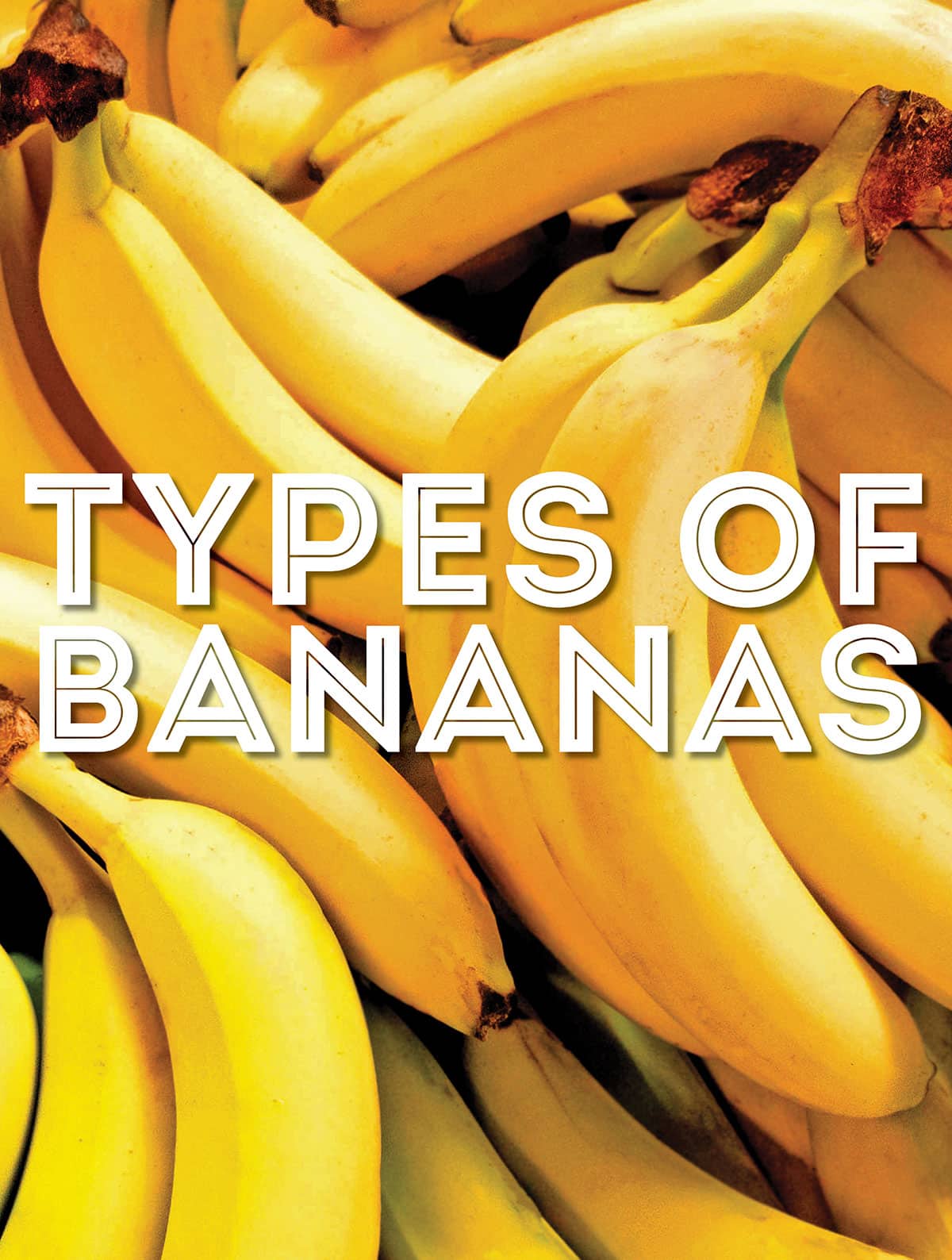
Did you know that 96% of Americans have purchased a banana in the last month? Bananas are the second most eaten fruit in the world after tomatoes. We humans consume 116 million tons a year!
Cavendish bananas are the most popular type of and are sold everywhere, almost, as generally are Ladyfingers and Plantains. But, I hope you don't let the dominance of the Cavendish bananas at the markets stop you or anyone from trying other varieties.
Bananas predominant 🍌
Cavendish Bananas make up 95% of all bananas eaten in the USA. This wasn’t the case before the 1960s. Which banana was the predominant variety before Cavendish? Scroll to the bottom of the post to see the answer.
Banana Varieties
Here are 25 different varieties of bananas from around the world – have you hear of them all?
APPLE BANANA
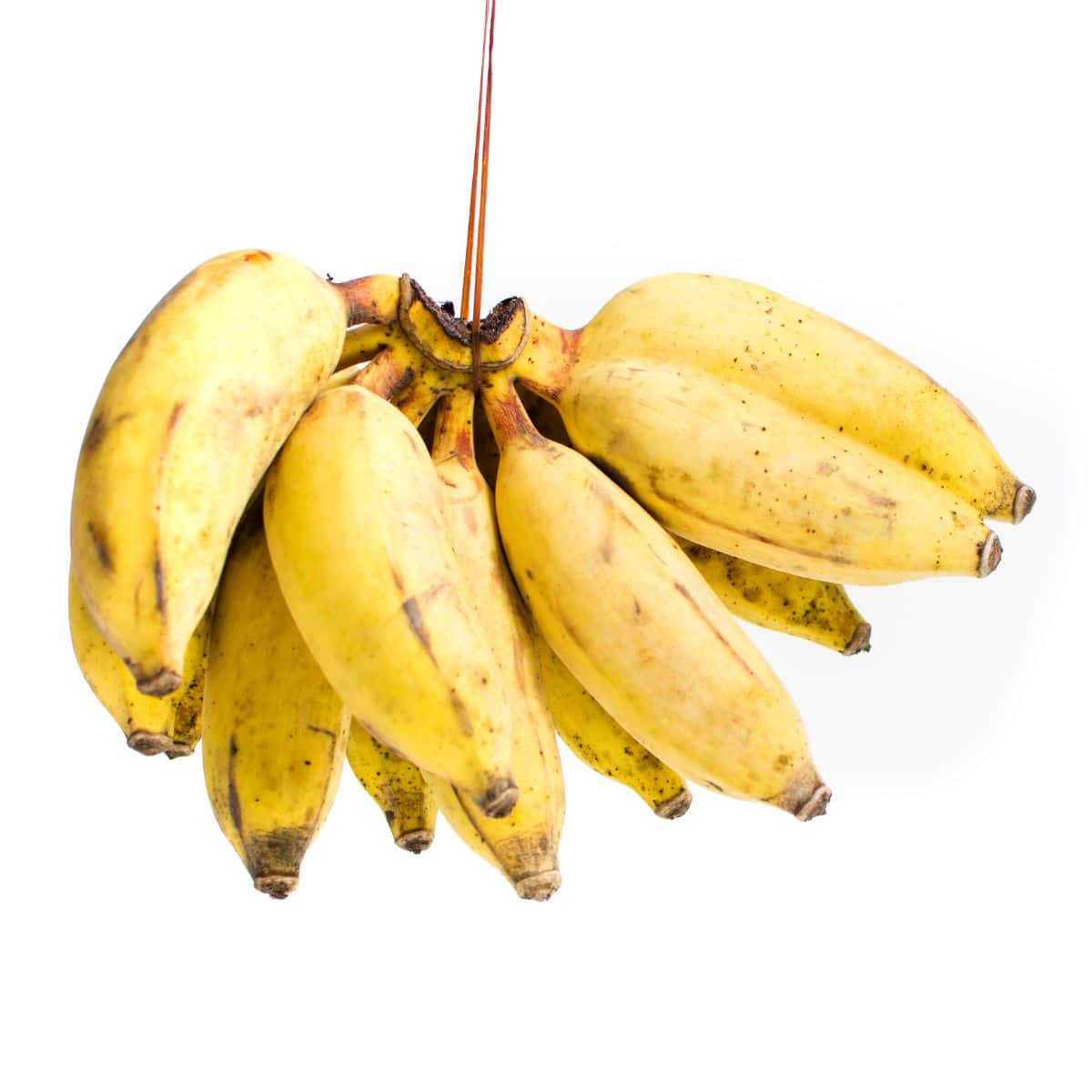
Apple bananas are native to Southeast Asia and got their name as their flavor has a hint of apple. These are shorter and sweeter bananas than the standard bananas we all know so well (called a Cavendish banana). Apple bananas are popular in Hawaii where they were introduced sometime in the 19th Century. They are eaten out of hand and often used in baking.
BARANGAN BANANA
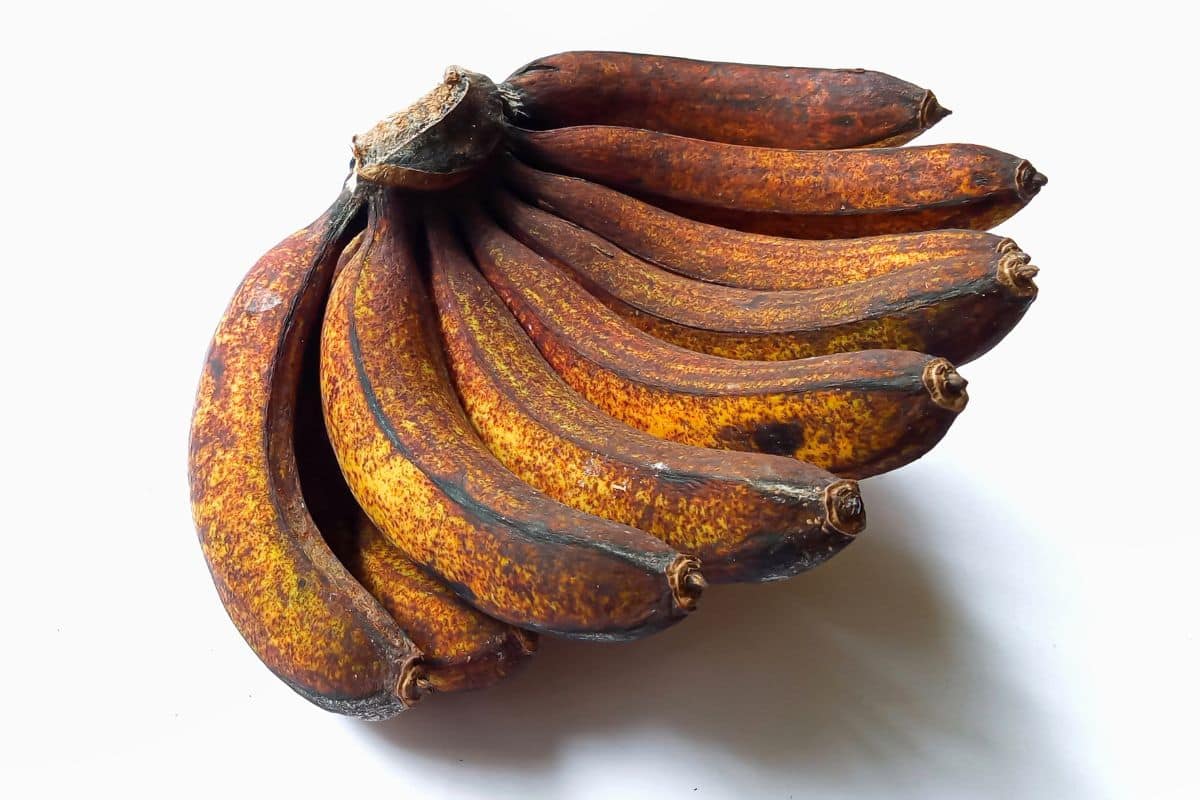
Barangan bananas are grown primarily in Malaysia. They are a small and sweet variety that is both popular in Malaysia and exported by them. You will find that many of the world’s largest banana producing nations consume a very high portion of the bananas they grow. Not unexpectedly, barangan bananas are difficult to find for sale in the United States.
BLUE JAVA BANANA
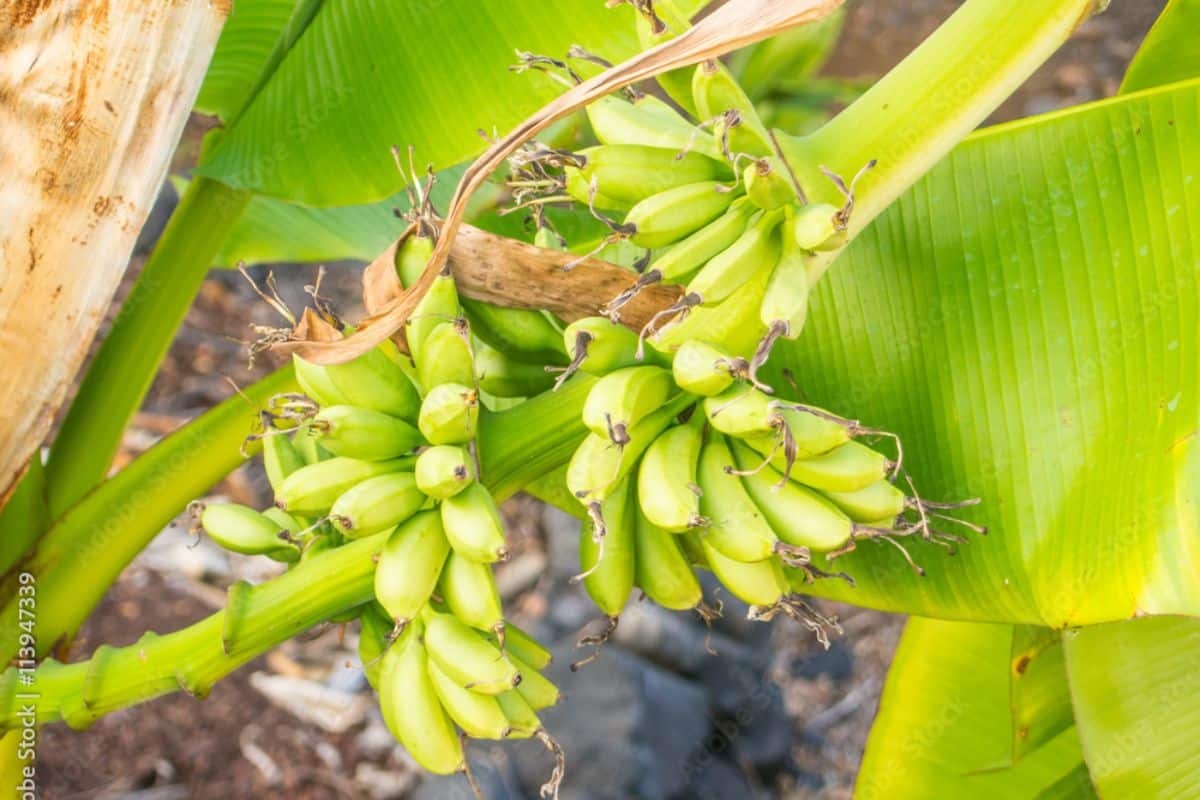
Blue Java bananas have, as their name suggests, a blue peel, but the flesh is white. They are grown primarily in Southeast Asia, but also Hawaii. They are said to taste something like vanilla ice cream. As these taste like ice cream, this seems a good time to introduce Nice Cream. This faux ice cream was introduced a few years ago and is very simple to make. Just put your frozen bananas into a strong blender, add your desired flavoring if any, and blend to the consistency of ice cream. This produces a credible “fake” ice cream that is considerably healthier than most cream and sugar based ice creams.
BLUGGOE BANANA
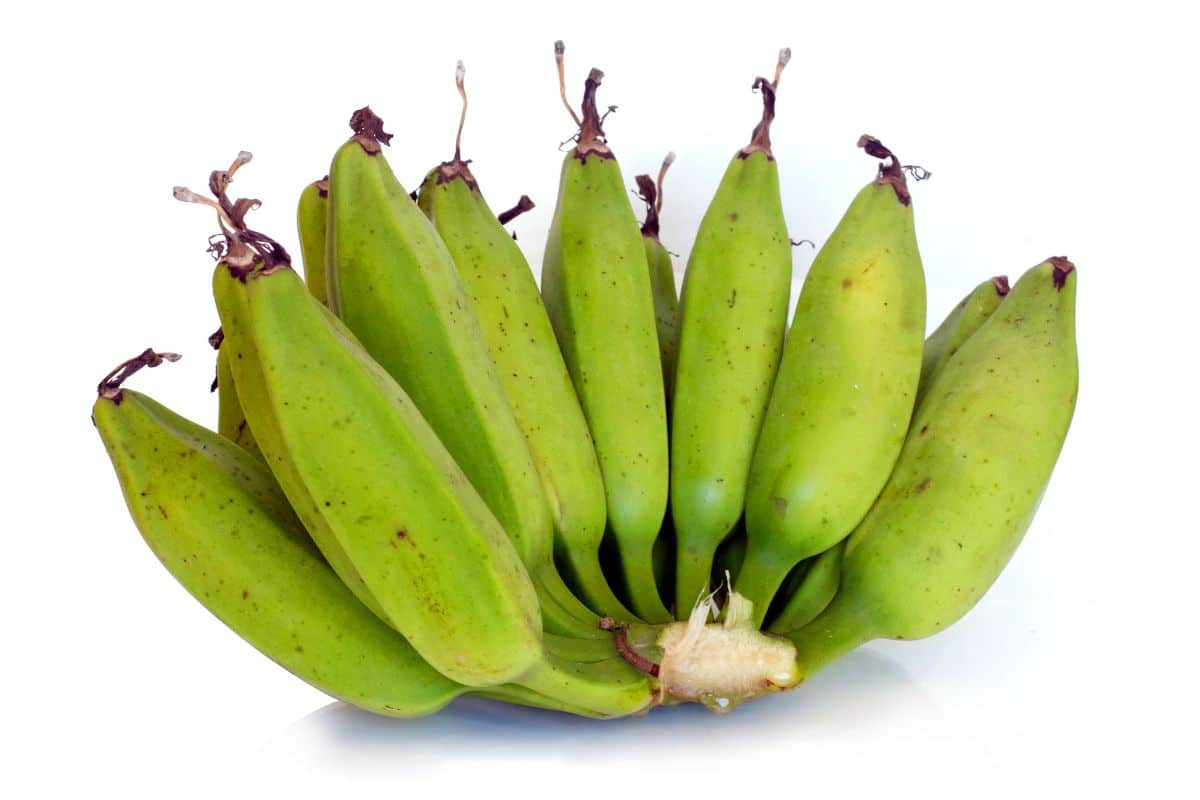
Bluggoe bananas are a large starchy banana native to Ecuador. They are fairly cold resistant, so they are also grown in the United States though we import most of the bananas we eat. Bluggoe are most often used as a cooking banana and are more expensive than the Cavendish you will find at your grocery. They might be a good option in any of these 15 Healthy Banana Recipes.
BURRO BANANA
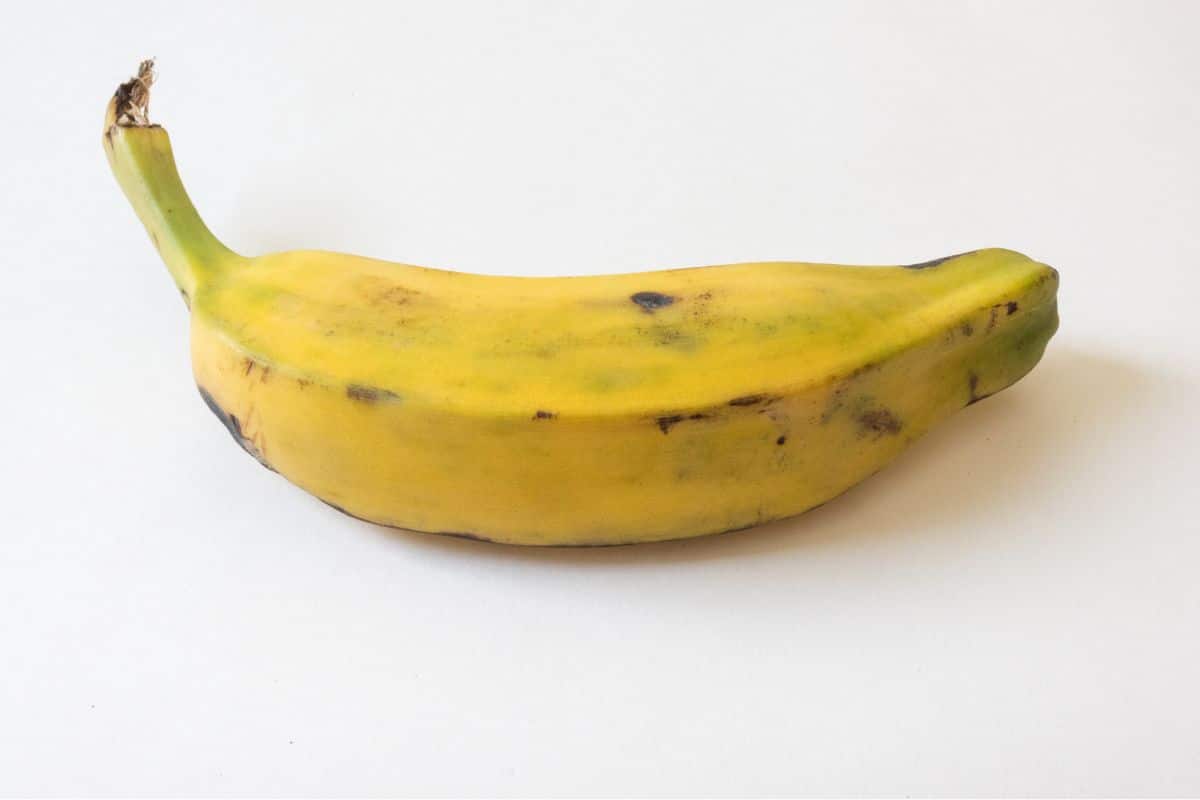
Burro bananas are native to Central and South America, but mostly grown in Mexico. They are cooking bananas often used in both sweet and savory cuisines to include Thai and Indian. They would be an excellent choice in Banana Thai Curry.
CAVENDISH BANANA
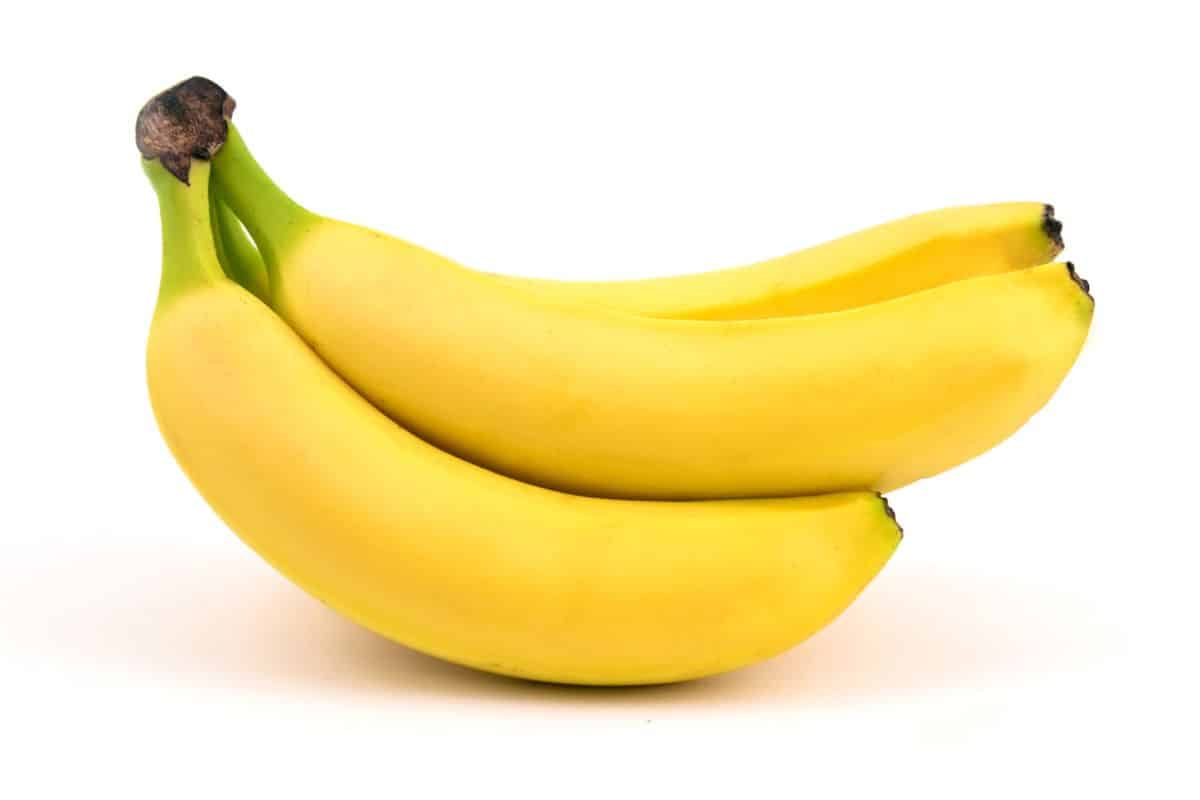
Cavendish bananas account for 50 million tons of the 116 million tons produced worldwide every year and are by FAR the most eaten banana in the United States. This was not always the case.
The Big Mike banana dominated the US market until the 1960s when a blight caused by the Panama Wilt Disease greatly curtailed production of the Big Mikes. The big banana companies adjusted and focused on the Cavendish, and why not?
They are the delicious dependable bananas we use as both snacks and cooking. We use them as the go to in most of our favorite Banana Recipes and my personal favorite Almond Butter Baked Bananas. If you aren’t looking to cook try this simple but decadent Key Lime Pie Smoothie.
COOKING BANANAS
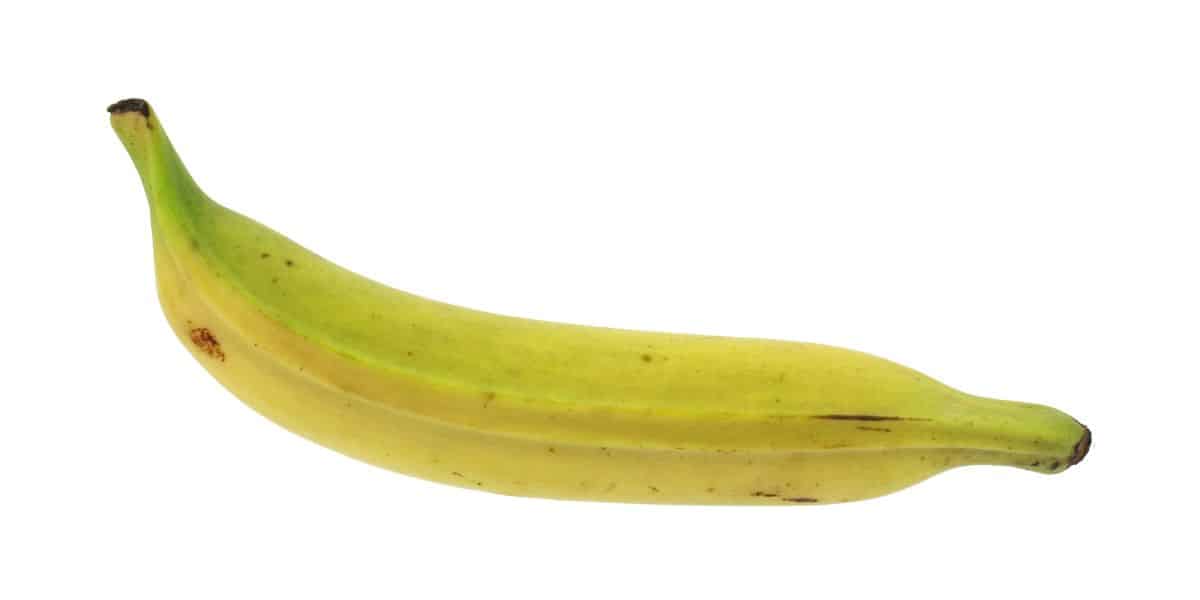
Cooking bananas are the name given to several varieties of starchy bananas with a neutral flavor mostly used in cooking. They are grown across Central and South America where they are a dietary staple. They are a good option for recipes based on fried bananas, curries, and desserts. Perhaps try them in Banana Thai Curry.
DWARF JAMAICAN RED BANANA
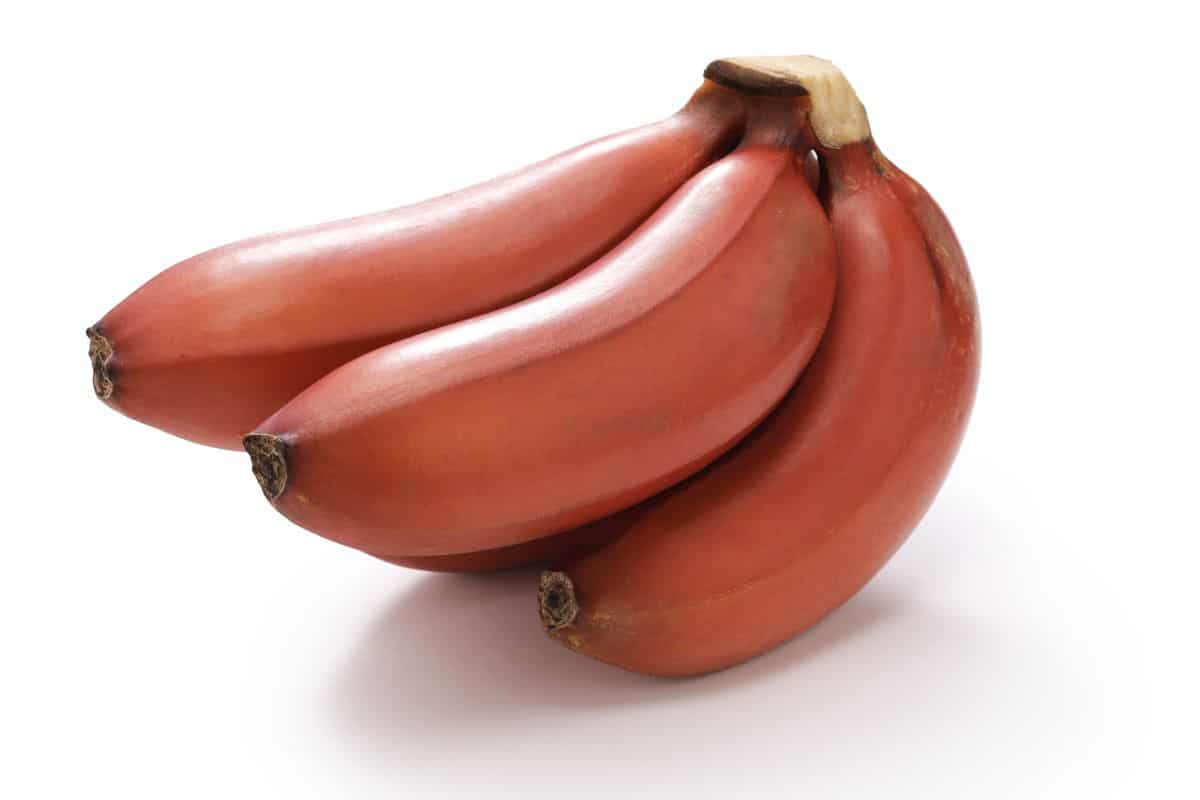
Dwarf Jamaican bananas are a small but sweet banana grown in, wait for it… Jamaica though they are also grown in California. They are an aesthetic banana with pleasant red hues, and make wonderful cooking bananas.
FEHI BANANA
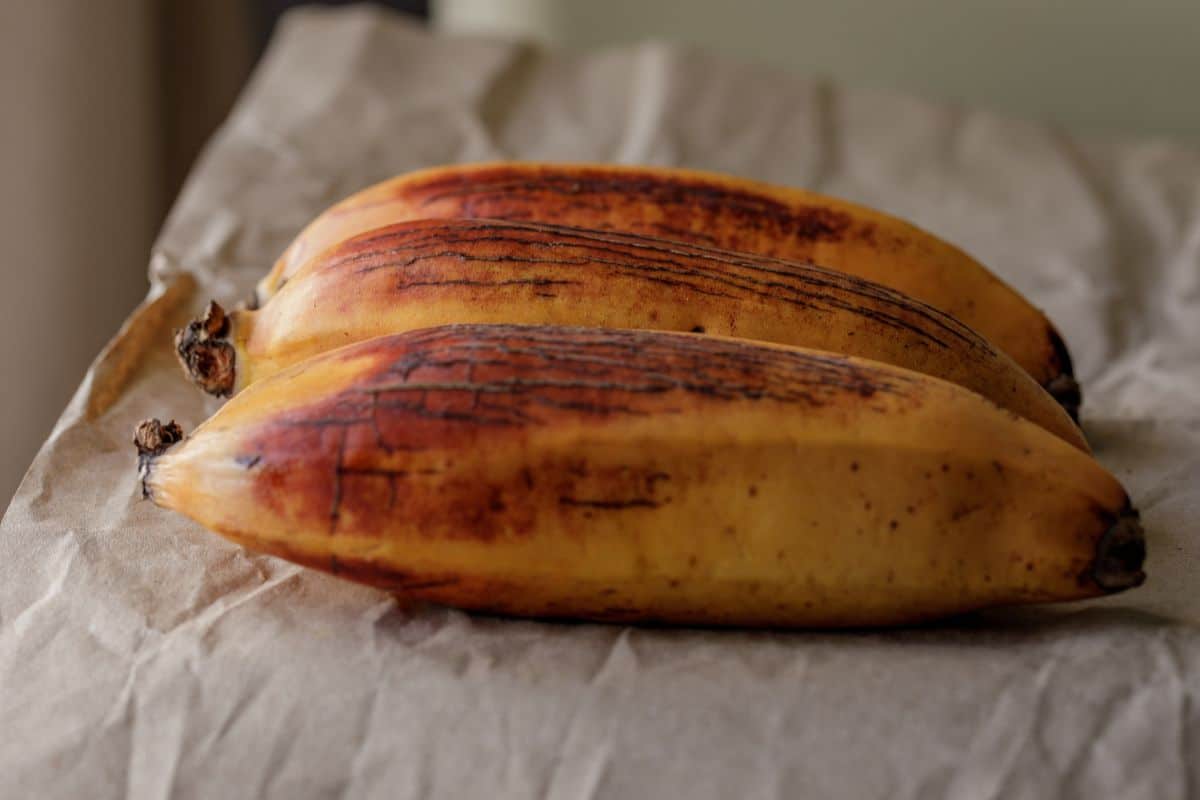
Also known as Fe’i bananas, they are grown on several Pacific islands, but primarily French Polynesia. They are small sweet bananas used in both baking and as snacks. Fehi bananas are not commercially cultivated, but are an important staple on the islands where they grow.
GIANT CAVENDISH
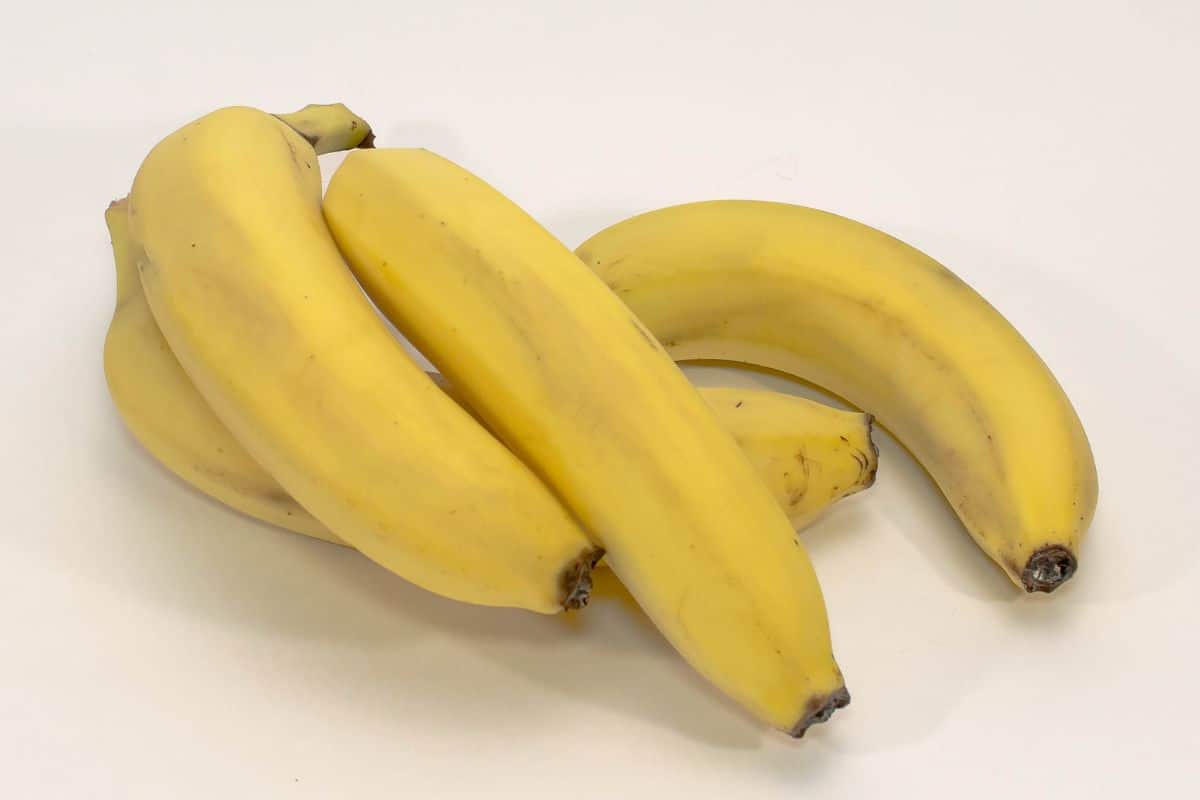
Also known as William Bananas, these are a larger version of the Cavendish. These would be good in cooking applications where a large banana could result in a better presentation than a smaller variety like Almond Butter Baked Bananas. Or, for similar reasons this healthy Breakfast Banana Split.
GOLDFINGER BANANA
The Goldfinger banana is a recently developed variety out of Honduras. It was an initiative of the United Fruit Company now known as Chiquita in cooperation with the Honduran Foundation for Agricultural Research. They used a variety of cultivars from SE Asia to genetically engineer banana trees that are insect-resistant and productive. Goldfingers are small sweet bananas also grown in Ecuador, Columbia, and Costa Rica.
GRAND NAIN BANANA
Grand Nain Bananas are a cultivar of Cavendish. You really can’t tell the differences between the two trees unless you put a picture of each side by side. The bananas are similarly pretty much the same for eating and cooking purposes.
GROS MICHEL BANANA
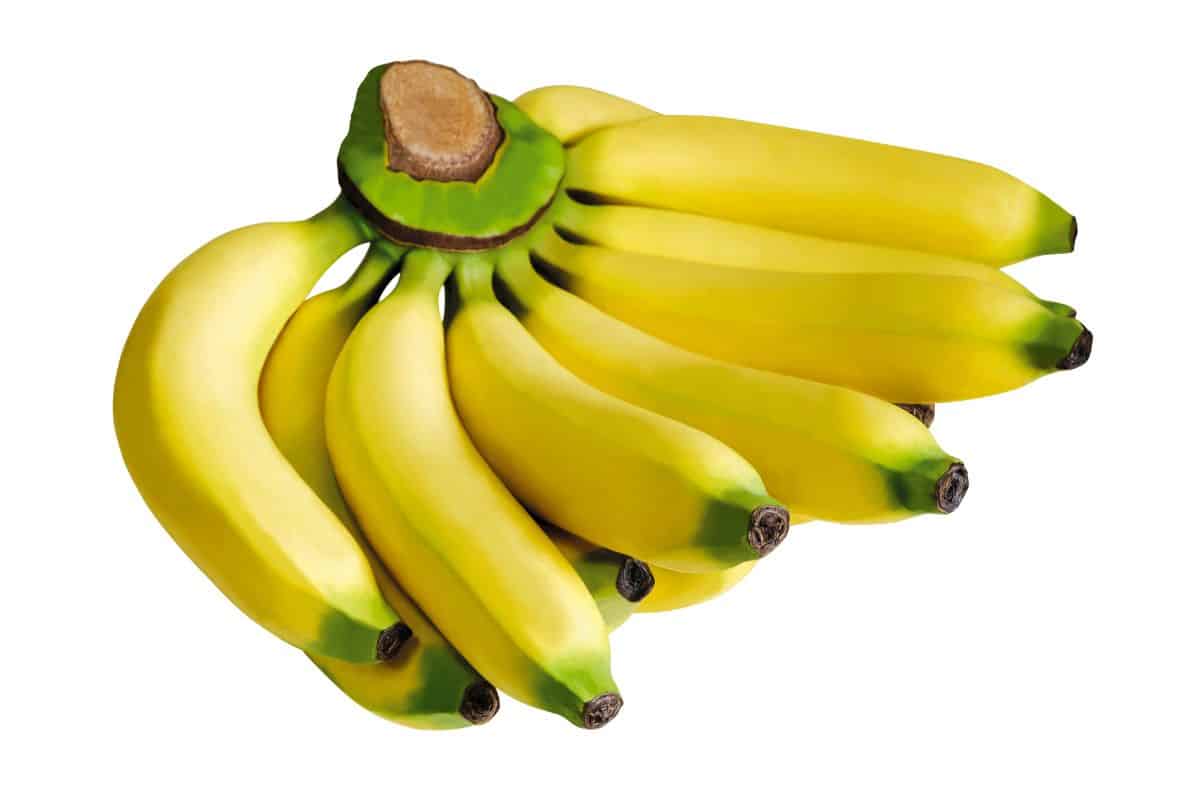
Gros Michel Bananas are also known as the Big Mike. They were the USA’s favorite banana until the 1950s when the Panama Disease so severely limited production that the major banana companies switched their focus to the Cavendish. Big Mike bananas are larger than Cavendish and grown primarily in Ecuador, Panama, and columbia.
LADY FINGER BANANA
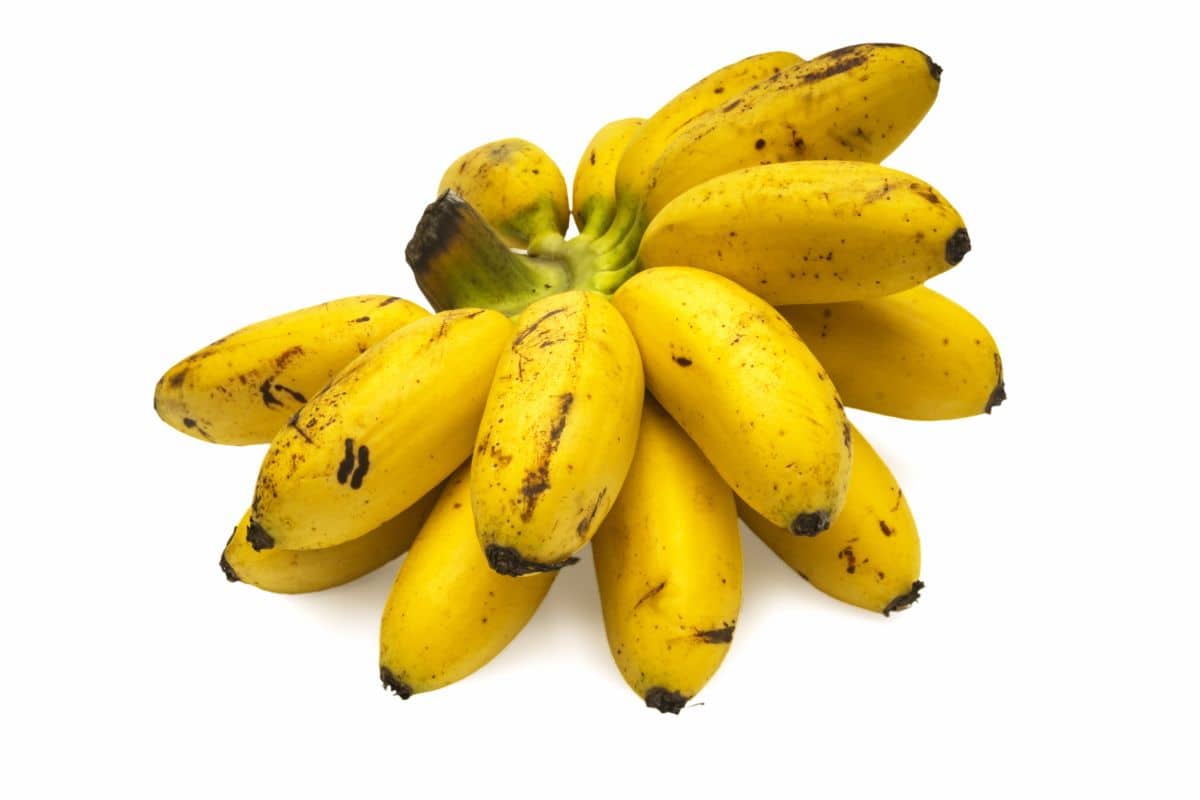
Lady Finger’s are also known as sugar, fig, or date bananas. They are small, thin skinned, and sweet. They are most commonly used in desserts as they are sweeter and less starchy than Cavendish, but they are also great as snacks. Lady fingers are native to SE Asia and Australia, and are grown in many nations.
They are a good option for banana bread, Banana Pancakes, and all sorts of Banana Smoothies. If you want to try a unique banana dessert, try them in these Stuffed Banana Bites. You may see lady finger bananas sold under the trademark name Baby by the Chiquita company of Minis by Dole.
LAKATAN BANANA
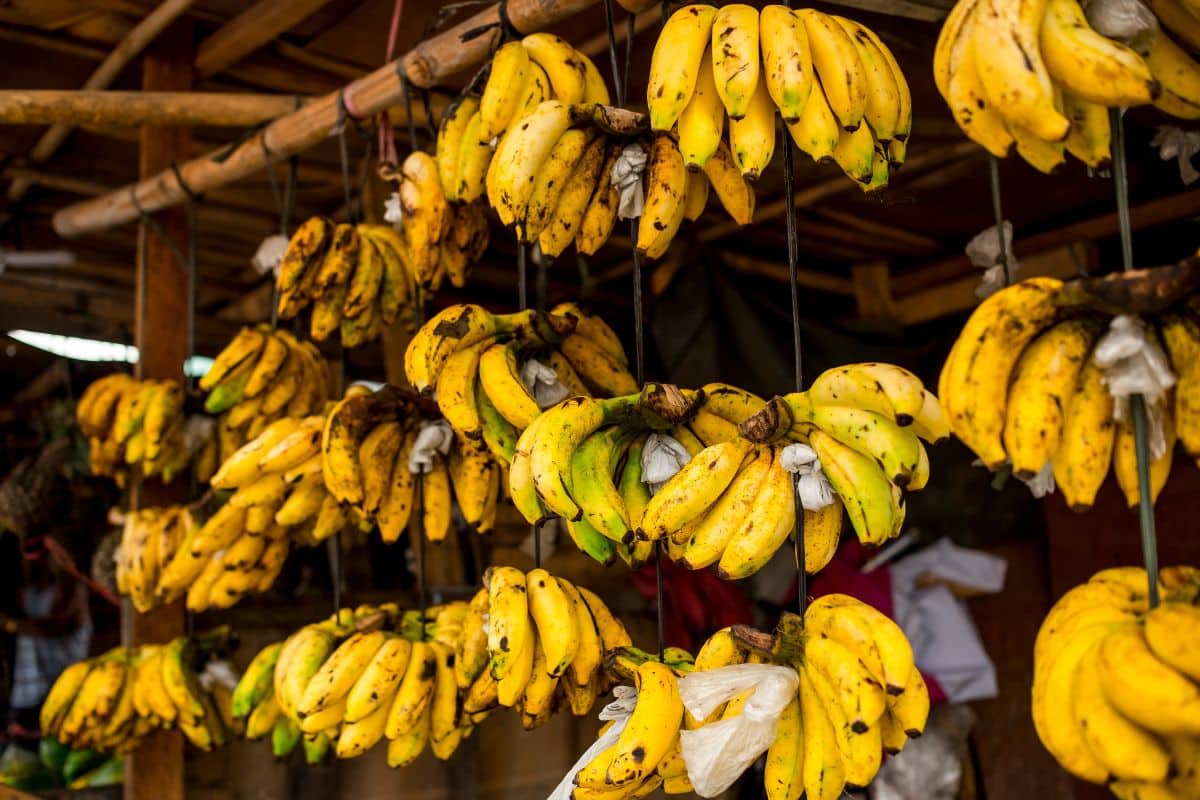
Lakatans are native to the Philippines where it is their favorite dessert banana despite being more expensive than other varieties grown there. It looks much like a small Cavendish, but isn’t easily found in the United States.
NANJANGUD BANANA
Nanjangud bananas are grown in the Kamataka region of India. They are known for their unusual taste and aroma that result from the black clay soil found in the region. When grown outside this region the unique taste and aroma do not occur. This makes the Nanjangud all but impossible to find.
We included this variety in our post, however, to bring attention to the Panama Wilt Disease that has been a problem for some banana varieties for about a hundred years now. The Nanjangud are suffering from this disease and many Nanjangud growers are switching to Grand Nain bananas as efforts to genetically protect the Nanjangud have not been successful.
It is worth noting that Cavendish bananas have recently come under threat from Panama Disease, but genetic modifications have been more successful with Cavendish.
ORINOCO BANANA
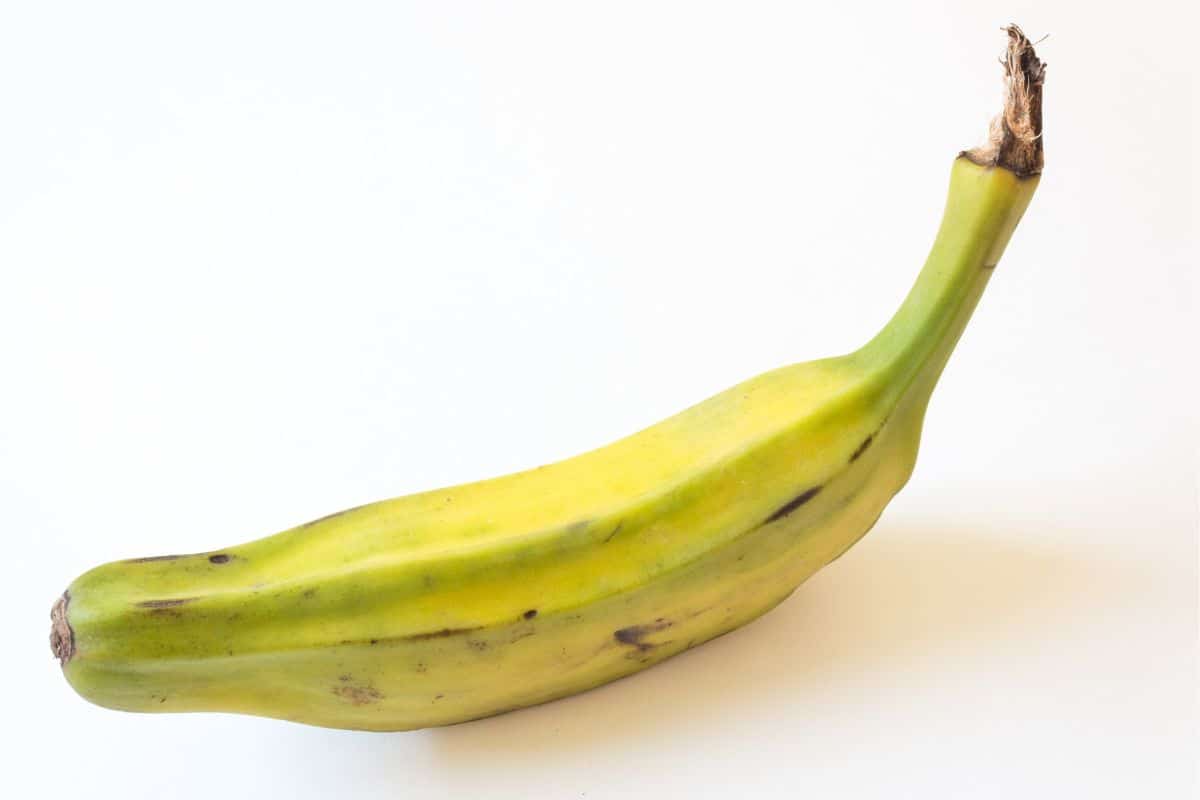
Orinoco bananas are native to Venezuela’s Orinoco River Basin, but are now grown in Southern California and the US Gulf Coast. They are short and fat bananas that appear almost round or oblong. It is a cold resistant variety making it popular with home gardeners. Orinoco are used mostly in cooking.
PISANG RAJA BANANA
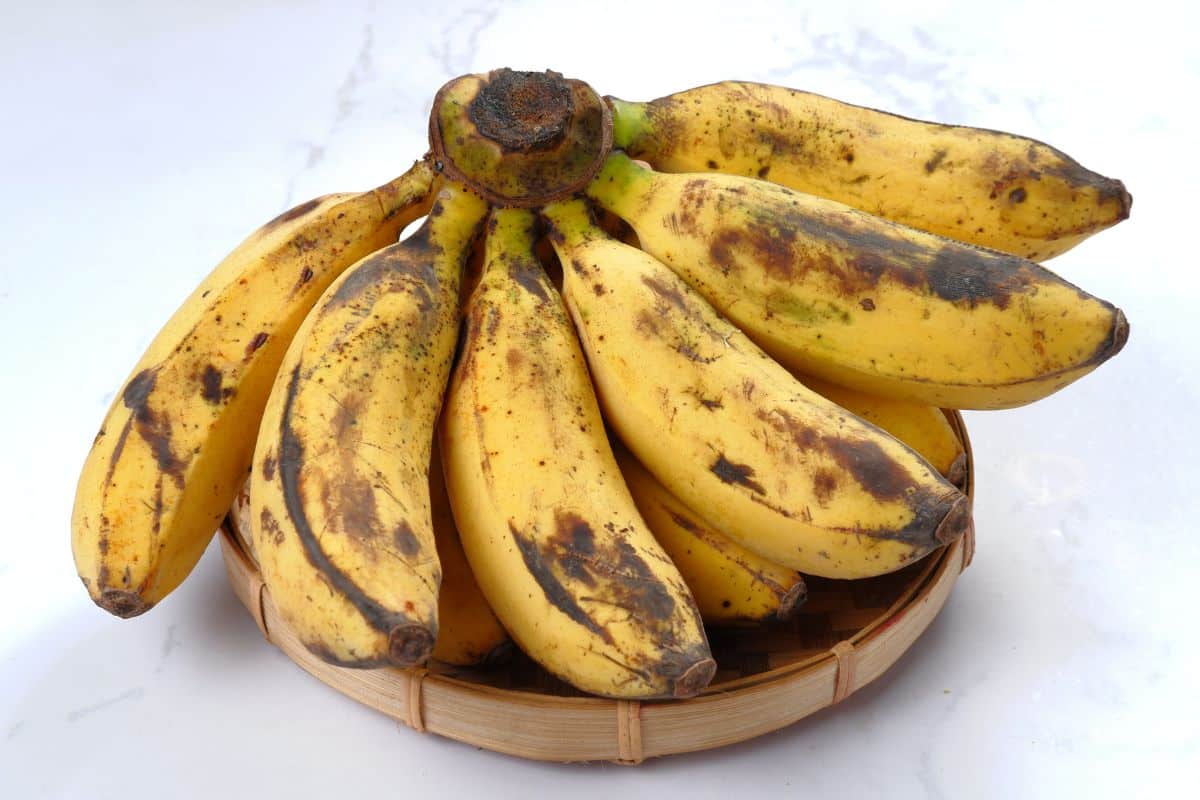
The Pisang Raja is native to Southeast Asia, and is named after the Pisang Raja mountains of Indonesia. They have a reddish peel and almost orange creamy flesh. These bananas are not starchy making them a good dessert banana, but they are also used in a variety of sweet and savory cuisines.
PISANG MAS BANANA
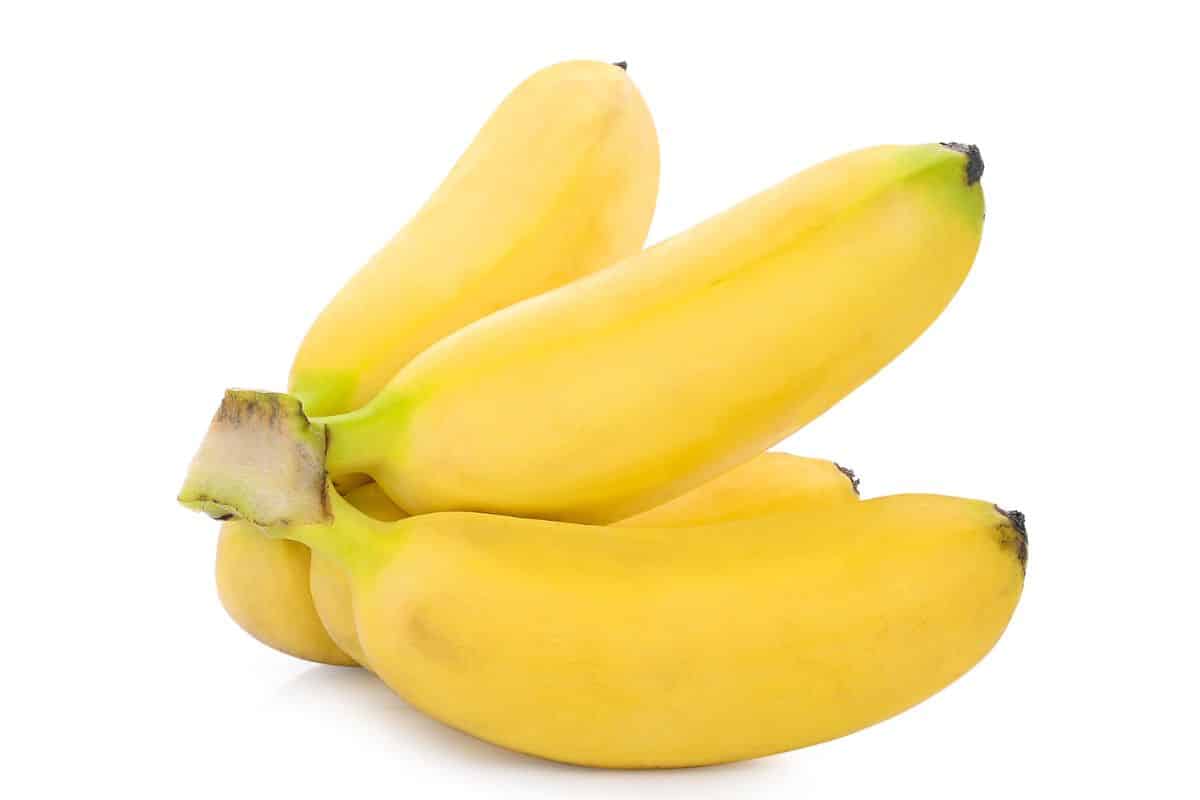
Pisang Mas are native to Southeast Asia. These small sweet bananas are often eaten raw or used as a dessert banana. They are regionally sold as a deep-fried street food, a common use since Portuguese explorers introduced the Pacific Islands to flour over 500 years ago. A more modern dessert use could be this Breakfast Banana Split which is excellent with any sweet banana, or the ubiquitous Cavendish.
PLANTAIN

Plantains are a group of banana varieties mostly used as cooking bananas as they are very starchy. Their starch content is generally highest before they ripen, so they are often cooked green. Plantains are a good option for savory dishes, fried, or made into flour. Like all bananas, plantains are a healthy dietary choice high in fiber and vitamins A, C, several B vitamins, and potassium (we’re breaking down the difference between plantains and bananas here!)
PRAYING HANDS BANANA
Praying Hands bananas are native to Indonesia, and grow in bunches that quite literally look like two praying hands. Hands with 6-7 fingers, but hands all the same. They are a sweet banana that is eaten raw, cooked like you might plantains, or eaten with cereal or yogurt. You can buy them in the US either at international markets or online through a number of different vendors.
RAJAPURI BANANA
Rajapuri bananas are grown in India and known for their wonderfully sweet taste and somewhat creamy texture. This is a multi-purpose banana that is good raw or cooked. It is also a popular home grown banana. The trees only get to 8-12’ high and produce large bunches of bananas.
RED BANANA
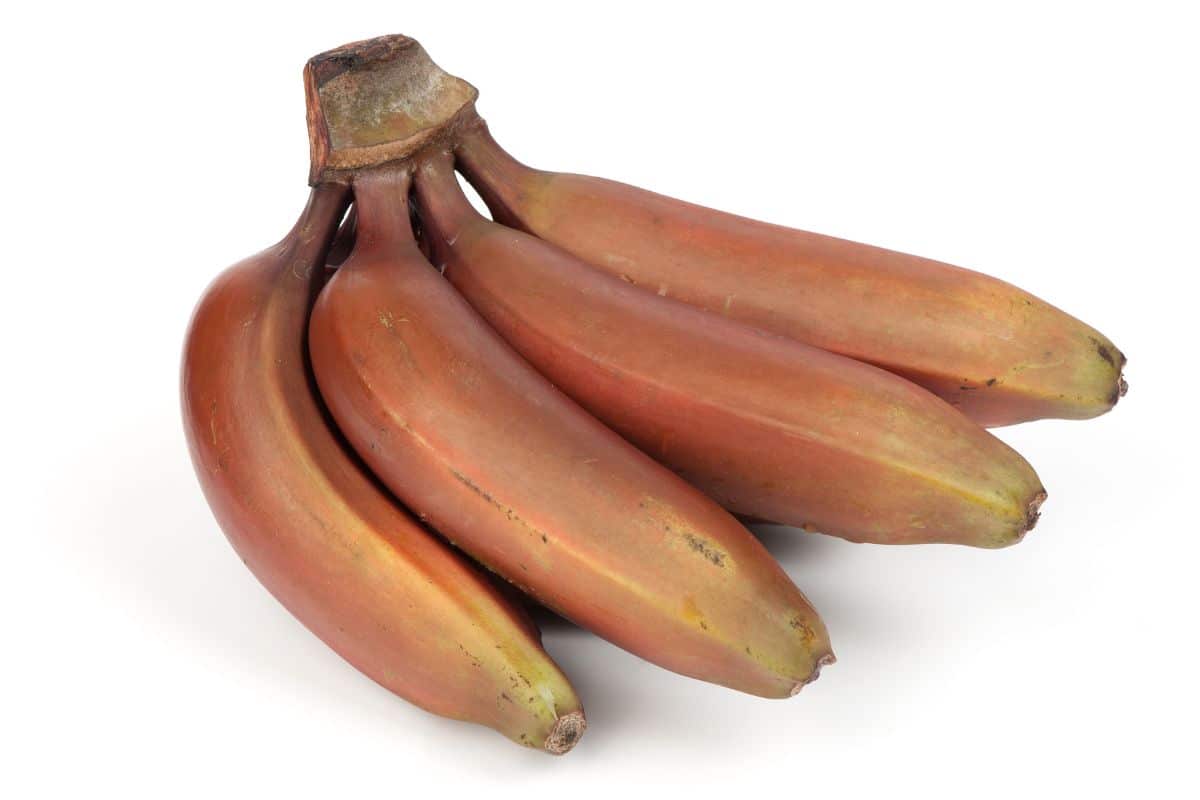
Red bananas are a variety with a reddish-purple peel. They are generally creamy with a light pink pulp. Shorter and fatter than Cavendish, they are an aesthetically pleasing variety grown in Asia, South America, and East Africa. Like so many exotic fruits, they are believed in some regions to have extraordinary health or medicinal benefits.
In some Central American nations they are believed to have an aphrodisiac effect and in India the ability to improve fertility. Other than these “uses” they are a multi-purpose banana eaten raw, cooked, dried, you name it.
RHINO HORN BANANA
Rhino Horn bananas are an African native that produces fruit growing up to an incredible 2 feet long. They are eaten raw and used in cooking, and are available in the United States generally via online ordering.
SABA BANANA
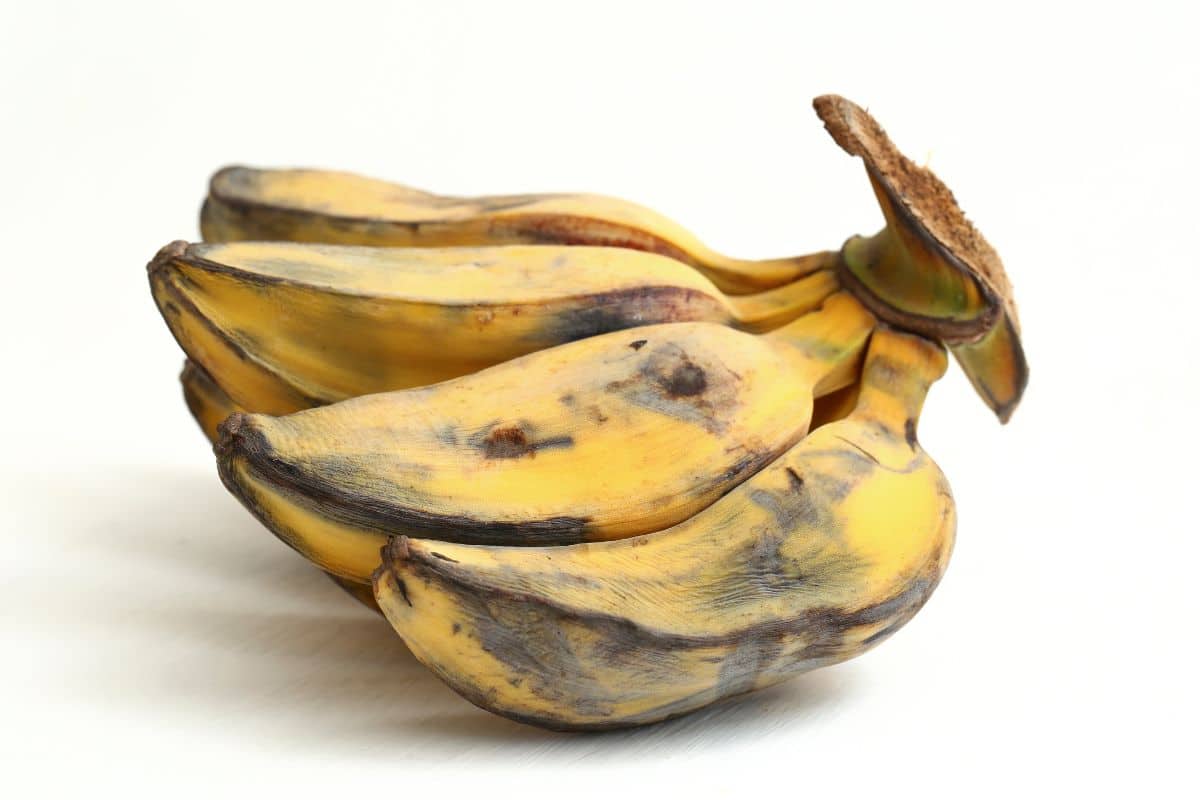
Saba bananas are grown mostly in the Philippines but also Malaysia, Indonesia, and Singapore where they are favored for their heartiness, pest resistance, drought resistance, and taste. They are large bananas used mostly for cooking, and the Filipinos have truly unique uses. They make a form of ketchup from the Saba, and sell them as street food covered in caramelized sugar on a stick.
Trivia Answer
The answer is Big Mike. Panama Wilt Disease wiped out vast tracts of these bananas starting around the 1920s. By the 1960s the major banana producers knew they had to switch varieties. Interestingly, a later variant of the Panama disease is now causing problems in Cavendish plantations today.
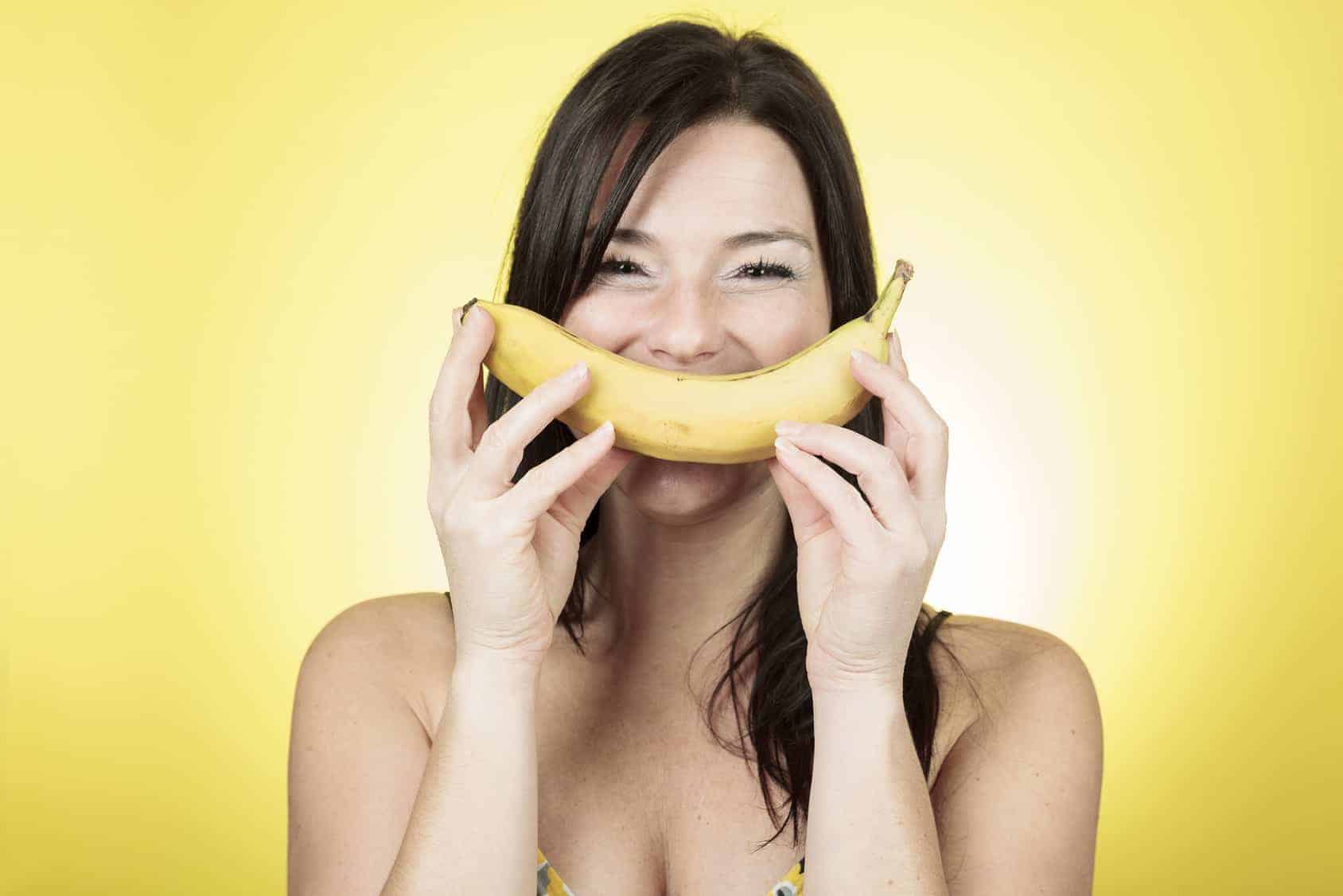




No comments:
Post a Comment